A Big Collection of Bog Bodies
by Gabe Paoletti
In many cases, you’re staring at the face of someone who lived centuries ago. That was their hair, their nose, their eye-lashes, their sleep. Very few things are more fascinating than this.
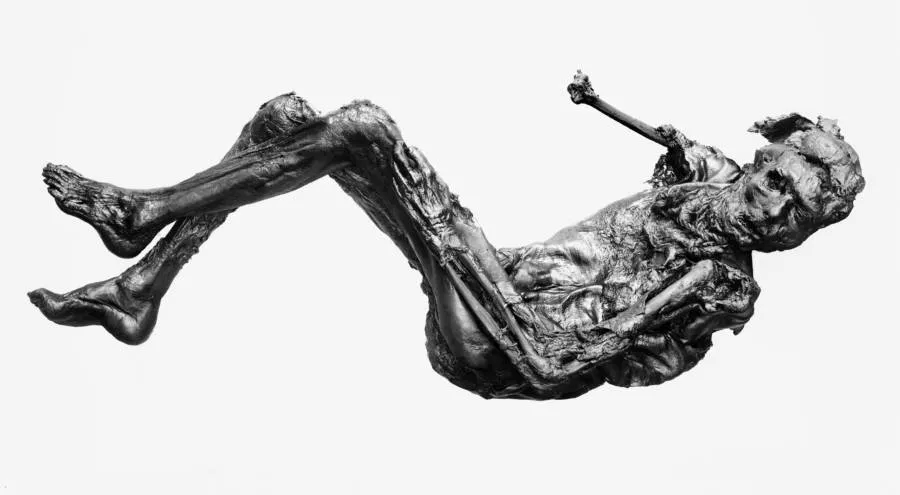
The Borremose Man died in the 7th century BCE. He was bludgeoned to death from the back of his head and had a rope with a slip knot tied around his neck. It is believed that he was a human sacrifice. He was found in the Borremose peat bog in Himmerland, Denmark in 1946. Shortly after, two other, less well preserved, bodies were discovered in the same marsh. Credit: Danish National Museum/Wikimedia Commons

The face of the Tollund Man. Credit: Sven Rosborn/Wikimedia Commons

The Yde Girl died sometime between 54 BCE and 128 CE at an approximate age of 16 years old. She suffered from scoliosis and had long reddish blonde hair that was preserved by the swamp. She was buried with a ritually tied woolen braid around her neck suggesting she was killed as a human sacrifice. However, due to damage to the body at the time of discovery, the cause of her death is unknown. She was found outside the village of the village of Yde, Netherlands. Credit: Drents Museum/Wikimedia Commons

The Grauballe Man died during the late 3rd century BCE when he was around thirty years old. He was found naked, with no indication of any clothing around him. His neck was slit from ear-to-ear in a bog in Jutland, Denmark in 1955. His well-preserved hair was likely dark brown during his life but was turned red by the bog. Historians believe he was likely a human sacrifice. Credit: Sven Rosborn/Wikimedia Commons
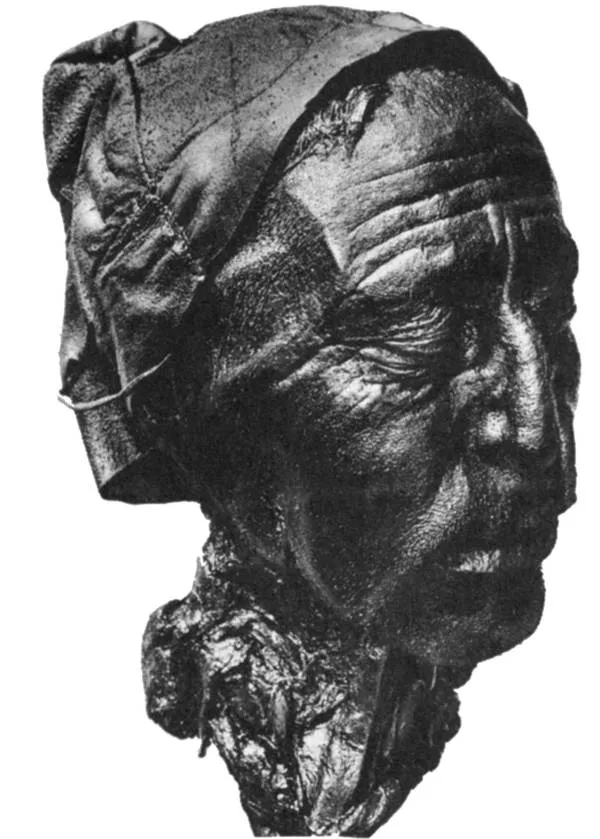
The Tollund Man was an approximately 40-year-old man who was killed sometime between 375 and 210 BCE. He was found with a noose around his neck, indicating he was hanged to death, as well as a sheepskin cap on his head. He was found in a bog outside of the Danish town of Silkeborg in 1950. Credit: Wikimedia Commons

The Damendorf Man died around 300 BCE and had his body squashed flat by the weight of the peat that accumulated on top of him. He was found in a bog outside the German town of Damendorf in 1900 with a leather belt, shoes, and a pair of breeches. Credit: Bullenwächter/Wikimedia Commons
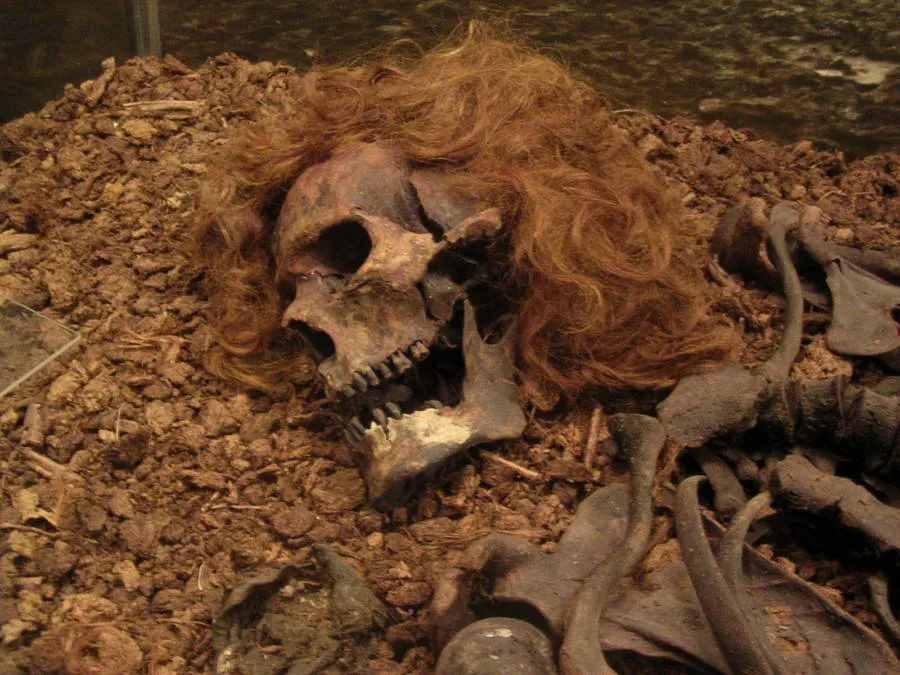
The Bocksten Man likely lived sometime between 1290 and 1430. He was a tall, slender man, most likely in his 40s at the time of his death. He was killed and impaled with two wooden poles, one that went directly through his heart, to the bed of a lake that would later become a bog. This impaling likely happened after his death as he also has a large wound on his head. He was found in a bog near Varberg Municipality, Sweden in 1936. His hair was found perfectly preserved, and he was also discovered with a hooded garment and an engraved leather sheath. Credit: Peter Lindberg/Wikimedia Commons

The Arden Woman lived during the 14th Century BCE and was around 20–25 years old at the time of her death. She was found in the Bredmose bog in Hindsted, Denmark in 1942. Police said the corpse was found in a ‘question mark’ shape. Her well-preserved hair was dark blond, drawn into two pigtails, and coiled around the top of her head. Unlike some bog bodies, she was found with garments and with no evidence of a violent death. Credit: P.V. Glob/Wikimedia Commons
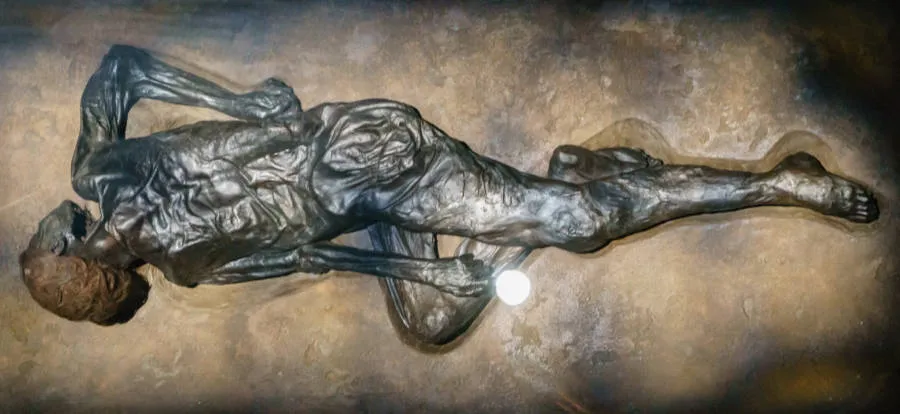
The full body of The Grauballe Man. His hands were so well preserved that researchers were able to take the fingerprints of the over 2,000-year-old body. Credit: Colin/Wikimedia Commons
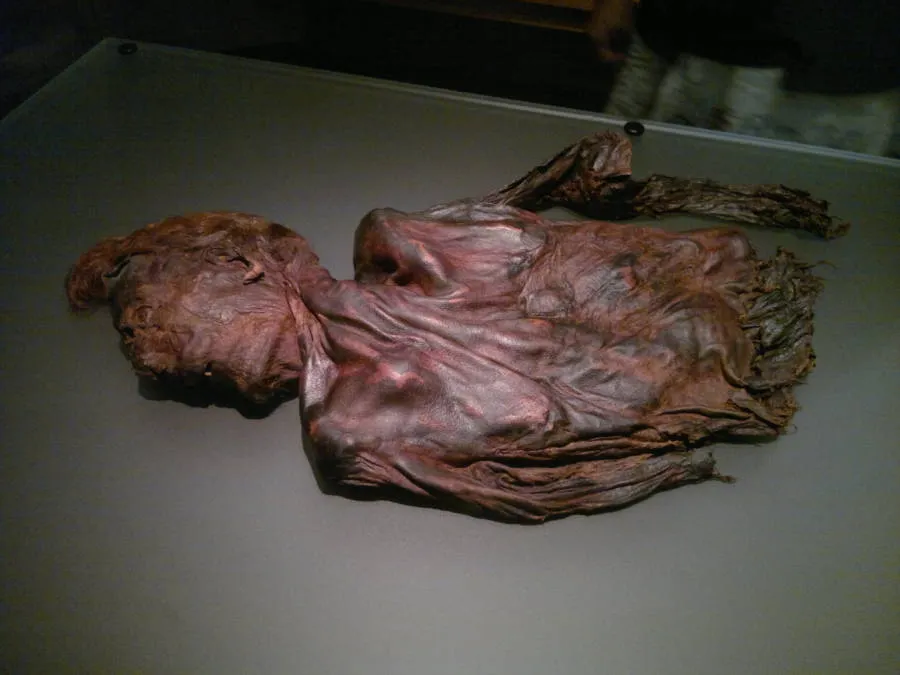
The Clonycavan Man was an Irish man who died sometime between 392 BCE and 201 BCE. He was 5’2, with a squashed nose, crooked teeth, and gelled-up hair. He was killed by an ax blow to the back of his head. The Clonycavan Man was discovered in 2003 in Clonycavan, Ireland when he was picked up by a modern peat harvesting machine that mangled his lower body. His rich diet, imported hair gel, and death near a hill used for kingly initiation led historians to theorize that he was a king who was ritually sacrificed after a bad harvest. Credit: Mark Healey/Wikimedia Commons

The Kreepen Man was a body discovered in a bog in 1903 near Verden, Germany. The body had twisted oak and willow branches binding his hands and feet. After its discovery, the body was sold to The Museum of European Cultures in Berlin but was destroyed when the city was bombed during WWII. Hair found at the site believed to belong to the Kreepen Man, date to between 1440 and 1520, but without the body, the genuine date of death is unknown. Credit: Andreas Franzkowiak/Wikimedia Commons

The Huldremose Woman died sometime between 160 BCE and 340 CE and was over 40 years old at the time of her death. She had a rope around her neck indicating she may have been strangled or hanged to death. There is also a laceration on one of her feet. She was found with an elaborate wool plaid cape, scarf, and skirt. She was found by a school teacher in 1879 in a peat bog near Ramten, Denmark. Credit: Kira Ursem/Wikimedia Commons

The Weerdinge Men are two naked bog bodies found in Drenthe, the Netherlands in 1904. They would have lived sometime between 60 BCE and 220 CE. One of the men had a large cut in his abdomen, through which his intestines spilled out, which some historians believe indicates that he was cut open so an ancient druid could divine the future from his entrails. Credit: Wikimedia Commons

The Röst Girl is thought have died sometime between 200 BCE and 80 CE in a bog in the Schleswig-Holstein state of Germany. She was discovered in 1926, but the cause of her death is unknown because her body was destroyed during WWII. Credit: Wikimedia Commons
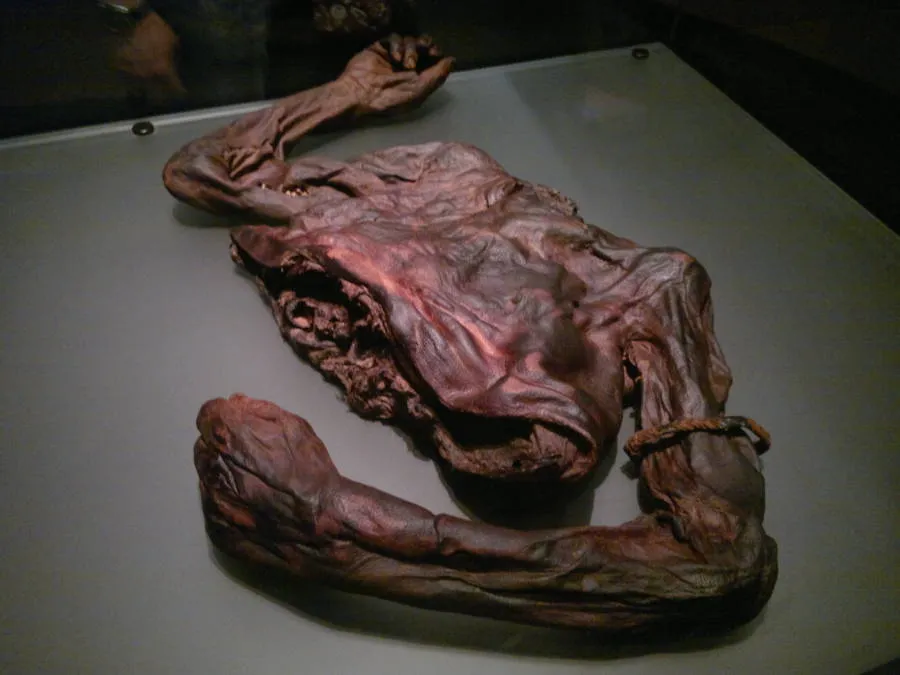
The Old Croughan Man lived sometime between 362 BCE and 175 BCE and would have been around 20-years-old at the time of his death. This torso, missing the head and lower body, was discovered in 2003 in a bog near Croghan Hill in Ireland. From his arm-span, it is believed he would have been 6’6. Credit: Mark Healey/Wikimedia Commons
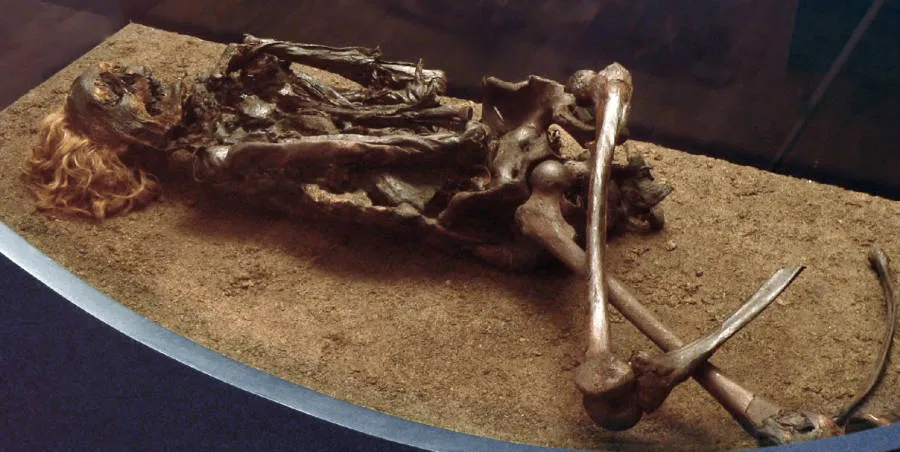
Roter Franz died in the Bourtanger Moor, on what is now the border of Germany and the Netherlands, sometime between 220 and 430 CE during the Roman Iron Age. The name Roter Franz (meaning Red Franz in English) is derived from the red hair and beard discovered on the body. He was killed when his throat was slit and had an arrow wound on his shoulder. Credit: Axel Hindemith/Wikimedia Commons
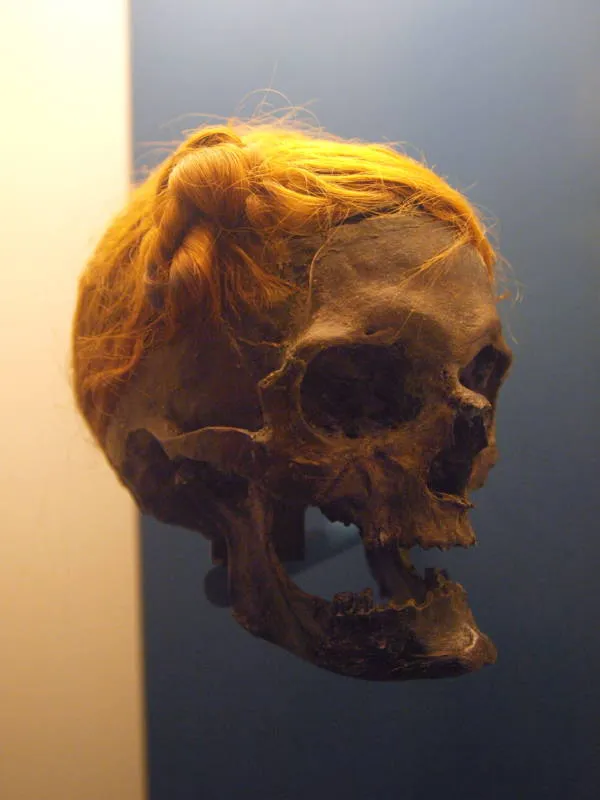
The Osterby Head was discovered in 1948 in a bog to the southeast of Osterby, Germany. The man whose head this belonged to lived sometime between 75 and 130 CE and was 50 to 60 years of age when he died. Evidence shows that he was struck in the head fatally and then beheaded. His hair was tied in a Suebian knot, indicating he was likely a free man of the Germanic Suebi tribe. Credit: Andreas Franzkowiak/Wikimedia Commons

The Kraglund Man was discovered in 1898 in Nordjylland, Denmark. He is believed to have been male, but there is little documentation, and the body has been lost. He was the first bog body to be photographed before being moved from where it was discovered. Credit: Georg Sarauw /Wikimedia Commons
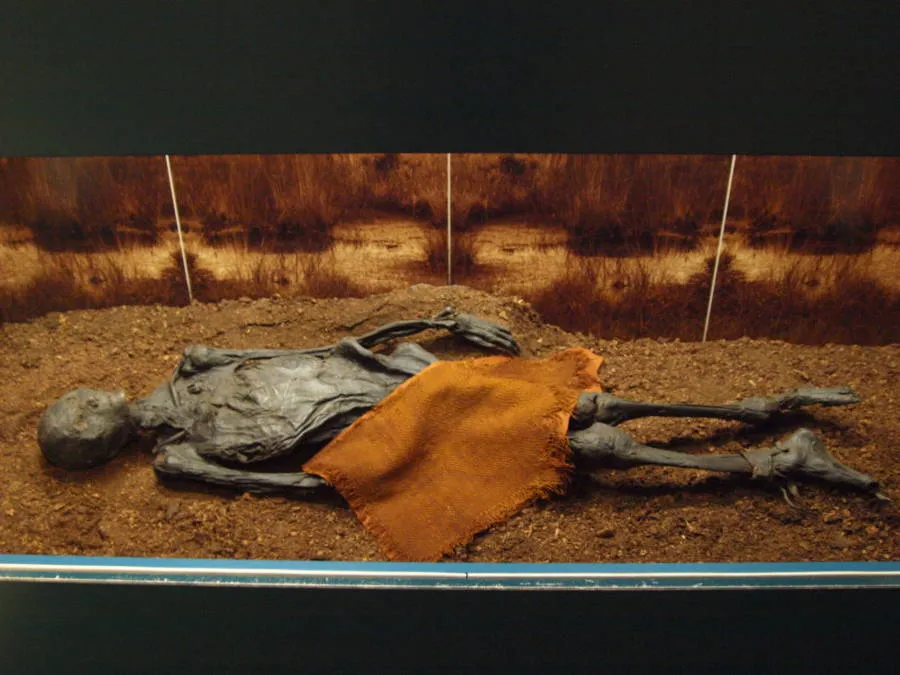
The Rendswühren Man was a 40 to 50 years old man who died in the 1st century CE. He is believed to have been beaten to death and was buried with his clothing, a rectangular wool cloak, and a fur cape. He was discovered outside the town of Rendswühren in Germany in 1871. Credit: Andreas Franzkowiak/Wikimedia Commons
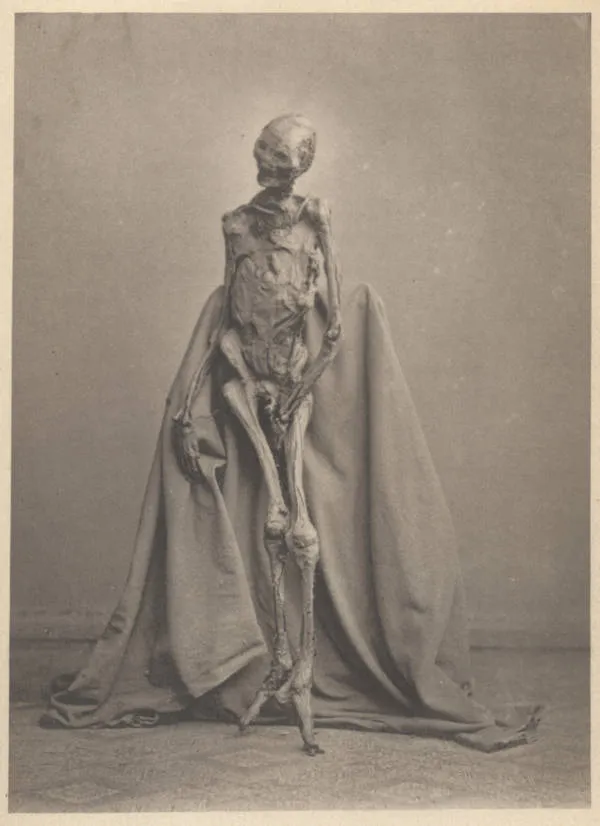
A picture of the Rendswühren Man taken in 1873, two years after he was discovered. Credit: Johanna Mestorf/Wikimedia Commons
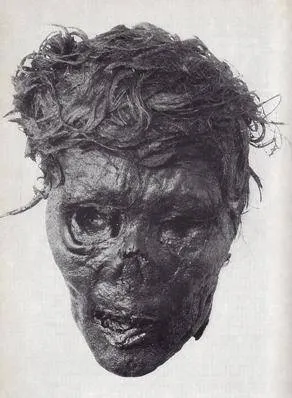
The Roum Head was found in Himmerland, Denmark, and belonged to a man in his 20s who died during the Iron Age. The find was originally titled as “The Roum Woman” until traces of beard stubble were found on the face. Credit: Wikimedia Commons

The Haraldskær Woman was discovered in a bog in Jutland, Denmark in 1892. When she was discovered, she was believed to be Queen Gunnhild of Norway, a quasi-historical figure from around 1000 CE who was said to have been drowned in a bog. Thinking it was their ancient queen, the Danish monarchy had the body placed in an elaborate glass-covered sarcophagus inside St. Nicolai Church in central Vejle, Denmark. In 1977, radiocarbon dating proved that the woman actually lived nearly 1,500 years before the revered queen, and likely died in the 5th century BC. She was around 40 years old at the time of her death. Credit: McLeod/Wikimedia Commons

The Haraldskær Woman in her glass-covered sarcophagus. Credit: Västgöten/Wikimedia Commons
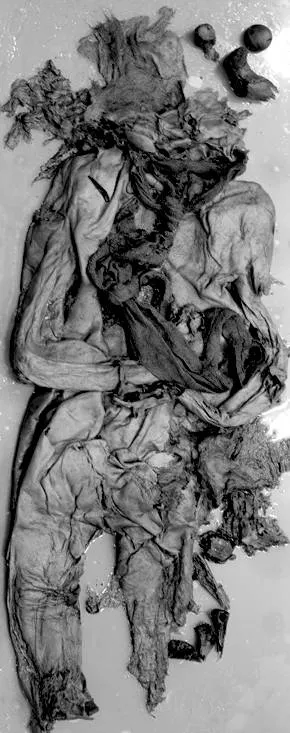
The Kayhausen Boy was a child aged 7 to 10 years old who is thought to have been killed died between 300 and 400 BCE. He had an infected socket at the top of his femur that would likely have made him unable to walk. His killers bound his hands and feet with cloth torn from a fur cape and stabbed him four times. His body was discovered in a sphagnum bog in Lower Saxony, Germany in 1922. Credit: Department of Legal Medicine, Universitatsklinikum Hamburg-Eppendorf